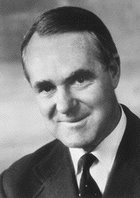
Scientists as Citizens
Quantum Nescimus
(What a Lot We Don’t Know)
As I watch the on-going debate between rational and religious believers I am struck by the incompatibility of both positions. We seem to have reduced the two positions to their extremes. Perhaps in an effort to simplify the choice between the two as if they are mutually exclusive.
While listening to show #48 of G’Day World from ThePodcastNetwork I was introduced to John Cornforth by way of Sir Harry Kroto’s talk about science to group middle-school students. Sir Harry is one third of the team that shared the Nobel Prize for Chemistry in 1966 for the discovery of Bucky Balls and the family of similar structures.
Sir Harry’s talk gave high praise to John Cornforth for the essay/speech Cornforth delivered to the Royal Australian Chemical Institute on the occasion of its 75th anniversary in September 1992. The speech was entitled Scientists as Citizens and much of what Cornforth had to say is still very relevant as we are still debating the place of Science in Society.
Cornforth points out that Science is the art of the probable with probable used in the old sense of testable, not our current definition: likely. He illuminates the duality that scientists operate under: scientific research pursues goals not always perceived as of immediate public benefit, yet when scientific discoveries are put into general use by society; it is the scientists who are blamed when unintended consequences of their work appear in society.
Scientists operate with three dilemmas dogging them: Secrecy, History, and Truth. Secrecy stems from competitive and security pressures that seek to prevent the collaborative nature of research from asserting itself. Science works best when information flows freely among scientists regardless of nationality or business affiliation. But, competitive pressure and national security concerns often interfere with this information Science works best when information flows freely among scientists regardless of nationality or business affiliation. But, competitive pressure and national security concerns often interfere with this information flow.
The History dilemma stems from scientists’ unique historical perspective. They understand the historical significance of facts in the face of the pressures for short term gains, profits or progress. For example historically scientists know that when a species is presented with an abundance of a resource, the resource is exploited to exhaustion followed by the species dying off. Scientists are too much the minority to convince society at large of the problem this portends for the future of the human species.
Cornforth distinguishes between Public truth and Private truth. Public truth is that which is accurately recorded without fabrication or distortion regardless of the conclusions such truths bring. In contrast, private truth is influenced by emotions. The euphoria of a new discovery observation must co-exist with the cold examination of the public truth.
Science and Scientists don’t escape unscathed from Cornforth’s discerning pen. He points out that the simplification required to measure results from discrete experiments often miss the complex interactions present in natural systems science is trying to quantify and explain. Not accounting for these interactions can lead to unexpected results when the results of scientific experiments are practiced outside the scientist’s laboratory.
He also cites the exponential growth of disciplines within science as the cause of the narrowing of domain knowledge among scientists. As more and more scientists specialize, it becomes harder for ideas to cross-fertilize one another across disciplines.
Finally, Cornforth concludes that scientists must put their case before a court where there is no judge, no jury and no rules of law and where regard for the truth is often a hindrance. He wants science education to include lessons in critical thinking. Students should be trained to ask the “Who says so? How do you know? What’s missing?” questions. Cornforth believes that students trained to be skeptical will make better members of society.
I recommend that everyone read Cornforth’s speech via the link below. His words have helped me begin to reconcile the conflict Science and the Society in which it is embedded.
References:
John Cornforth’s Speech to the Royal Australian Chemical Institute
John Cornforth’s Autobiography page from the Nobel Prize web site
Background information on John Cornforth via Google
Sir Harold Kroto’s Autobiography from the Nobel Prize web site
>JjV<
---------------------------------------------------
"Criminal Lawyer" is a redundancy.
No comments:
Post a Comment